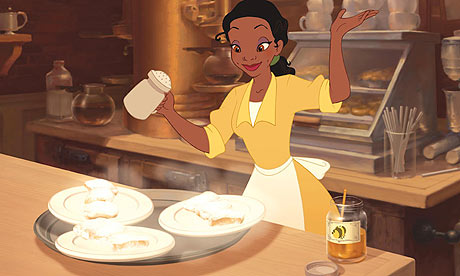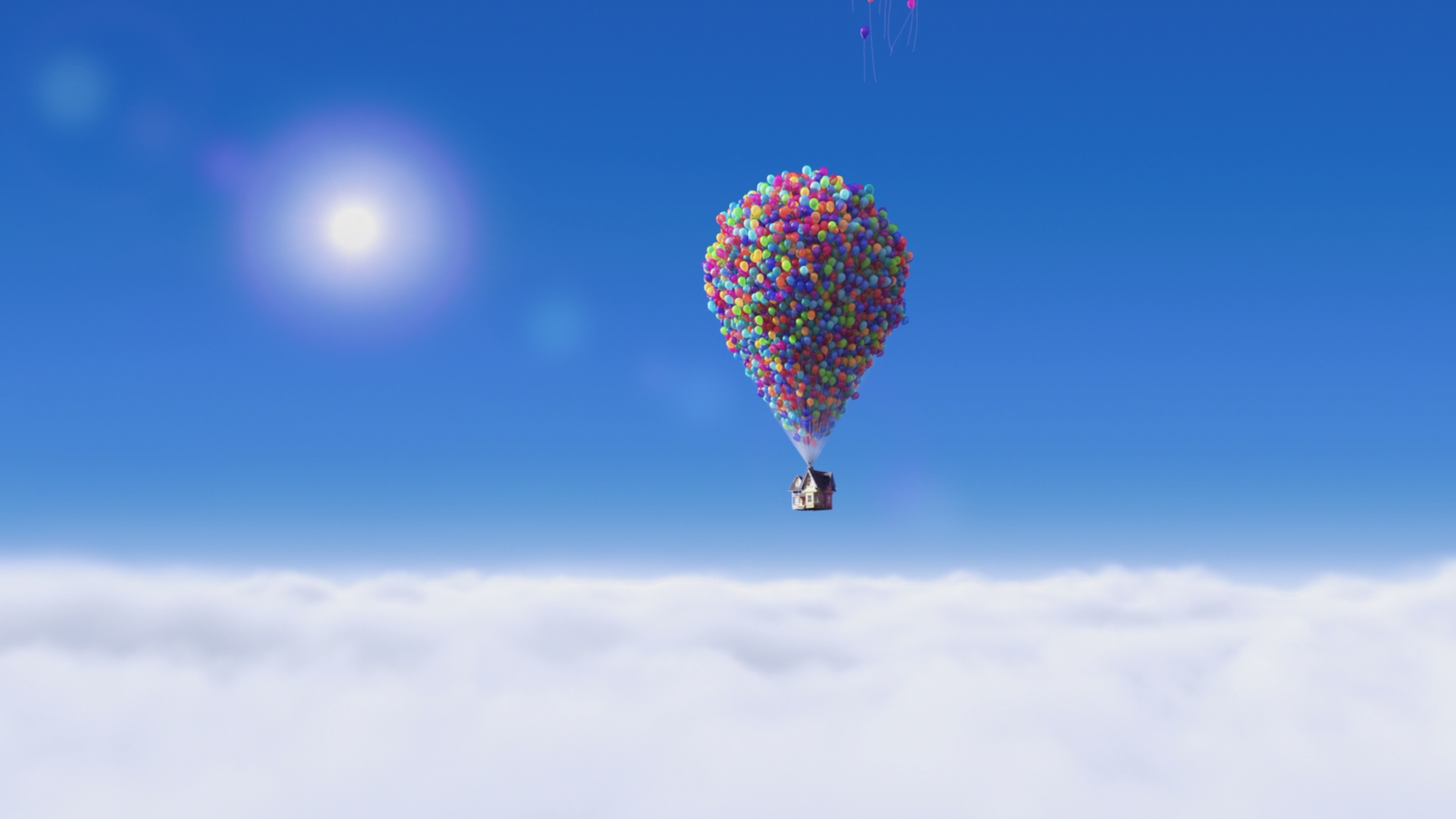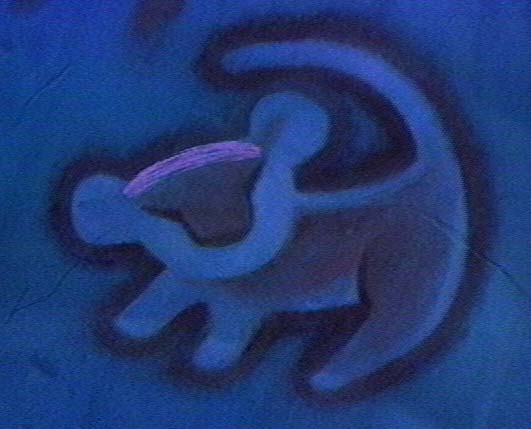Of the films I have watched in this class, many of them have
been introduced by my teacher with a brief foreword on what to observe. For my
most recent and last film study of the semester, I was asked to distinguish a
subtle theme in Disney’s 2009 film The
Princess and the Frog. This subtlety was to discern if the film genuinely
features Disney’s first black princess or if Disney presents a princess who
just happens to be black. Regardless, this film marks new territory for Disney,
as it is Disney’s first film with an African American female protagonist. From
what I perceived of the film, I felt that Disney successfully broke new ground
in presenting a black princess. The film however is not limited to a commentary
on race; it also heavily concerns itself with gender, breaking new ground with
an empowered female, and class, displaying socioeconomic diversity. Many
critical questions arise with Disney’s more progressive thematic concerns. I
believe Disney balances these concerns incredibly well to produce an
entertaining animation that expands its diversity while extending its universal
Disney appeal.
Before I begin a more critical analysis, I want to express
my enjoyment of the film. I thoroughly appreciated the storyline and the humour
in the film. I felt the setting of 1920s New Orleans gave the film a lot of personality.
I really enjoyed characters like Charlotte with her vanity yet Southern
hospitality and friendliness. Louis was incredibly entertaining with his
anthropomorphic depiction and love of jazz. Ray was an adorable unsung hero of
the film. In typical Disney fashion, the film ends with loves true kiss,
marriage and happiness as Tiana opens her dream restaurant. However the arrival
to this conclusion is unique and provides great entertainment.
Not only does Disney break its conventional template with a
black princess but also with an empowered female protagonist. Traditional
Disney princess are born into royalty or actively seek the desire of marriage
and ‘happily ever after’. Their characterization is usually shallow with an
incessant longing for marriage and their prince. Tiana subverts this
conventional depiction. The film strongly emphasizes her independence and
willpower. Tiana is introduced to the audience as an adult working two jobs to
save for her restaurant, foregoing the opportunity to dance with her friends
and determined to achieve her and her fathers dream. In this way, the film
takes on a more feminist reading, empowering the independence and strength of
women. Tiana is the manifestation of working class and working for a goal,
determined to open her own restaurant that will be the crown of New Orleans. At
the ball to welcome Prince Naveen, she is behind the tables, serving her beignets
to the affluent and exuberant public. She is not Disney’s typical princess; she
doesn’t seek her ‘prince charming’ and ‘happily ever after’. Tiana is the
epitome of an independent and driven women and her theme song ‘Almost There’ is
an ode to her hard-working nature.
The Princess and the
Frog is also a moving heavily concerned with class division, which can be
problematic. The film clearly distinguishes the affluence of the La Bouff
mansion to the lower class residence of Tiana and her family. The white La
Bouff family is shown to have deep pockets and Charlotte is the paragon of
entitlement. Meanwhile, Tiana and the black community are shown to live in much
more modest houses where a pot of gumbo brings together the whole community.
The La Bouff family is run by ‘Big Daddy’ while Tiana’s father passes away,
showing the dominance of the white patriarch. Furthermore, Tiana’s mother
Eudora works as the seamstress for the La Bouff family, a subservient role of
service to the rich white manor. While all these depictions lend themselves to
scrutiny and critical analysis, they do represent a relative accuracy of the
historic American South. Any more racial class division and Disney will be
reinforcing the age of slavery and any less division and Disney will be accused
of historical racism, whereby they are ignoring the reality of America’s racially
charged South and class injustices. I content that Disney errs on the side of
historical inaccuracy (presenting a historically racist depiction), as the New
Orleans society seems very equitable and joyful in an age where discrimination
and racial injustice was common. However, I think it is sensible to give Disney
a little bit of liberty as they are, after all, in the business of
entertainment and fairytale. These racial and class concerns are more plot
driven then racial charged and therefore, I argue that Disney is able to
navigate these concerns to the best of their ability.
Following the train of thought above, a natural question is
to inquire why Disney must set its first African American princess in the past.
The audience is entitled to criticize Disney for this portrayal. Setting the
film in the past distances Disney from the contemporary racial dynamic of
America. Disney is able to more indirectly incorporate a new racial component
to their catalogue without having to compete with the contemporary racial
scene. Playing both devils advocate yet also defending Disney, I believe that
Disney is circumventing racial questioning but I do not find an issue with it.
Disney typically presents its stories in an ambiguous setting and away from
modern society. While the setting of The
Princess and the Frog is more distinct, it is not definite and in reality,
is the best option. Disney couldn’t set its first black princess in Africa nor
would in a period before the abolition of slavery without drawing questions of
political correctness that would detract from the films penultimate intention
to entertain. Furthermore, the audience is entitle to question why Disney’s
first black princess is a frog for most of the film. While this is a genuine
concern, Disney has a common affinity with the animal kingdom and Tiana isn’t
the first anthropomorphic creature. While she is the first princess, this is
more plot driven then racially intended.
The Princess and the
Frog breaks new ground for Disney challenging their conventional portrayal of
women, their traditional princess and their lack of racial diversity. Doing so is new easy feat, and Disney
addresses these concerns with great balance that provides for the typical
Disney charm while expanding their representation. Disney challenges their own
outdated views in this more progressive film, which can at least be
acknowledged as a foot in the right direction.








